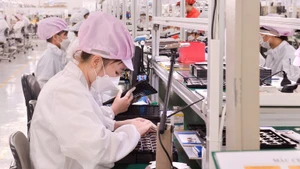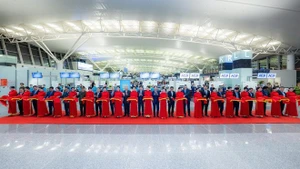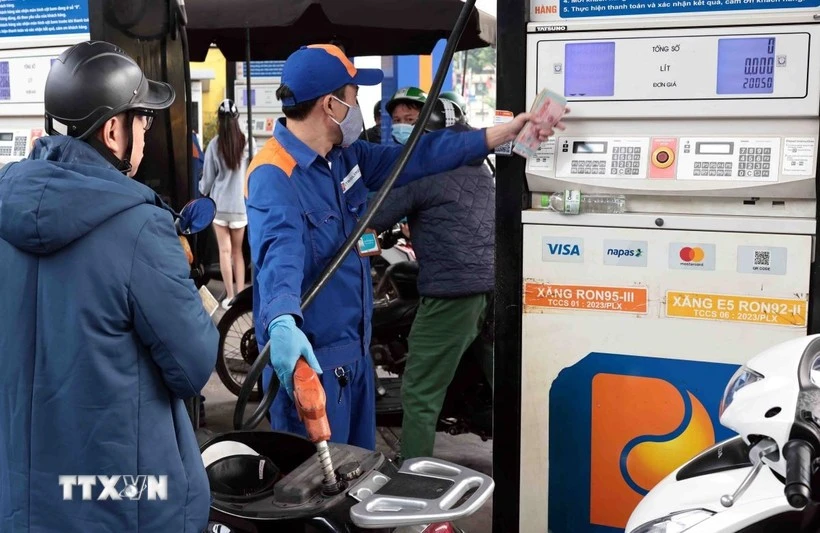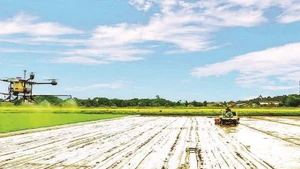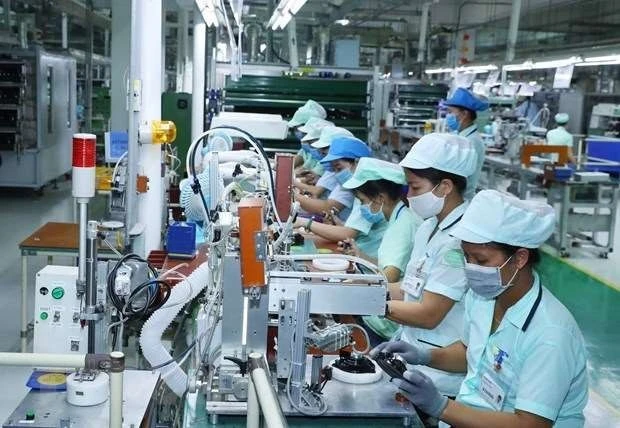In order to maintain growth rates, enterprises must flexibly implement solutions to enhance production, commercial activities, and product exports.
Up until now, enterprises have been facing many difficulties such as shortage of orders, price squeeze, gradual depletion of capital sources and so on. To ensure jobs for employees, many enterprises have had to accept small purchases, low prices or orders even contrary to their fortes.
Numerous difficulties
According to General Director of the Vietnam National Textile and Garment Group (Vinatex) Cao Huu Hieu, in 2023, World GDP is forecasted to experience smaller growth compared to that in 2022, due to tight monetary policy and geopolitical conflicts. Textile and garment commodities are consistently among the top 5 products to be cut down as a result of consumer spending restraint brought on by slow economic growth.
Because purchasing power in major markets such as the US and Europe has crashed, and due to existing unfavourable factors in the markets, Vietnam’s textile and garment industry in the first months of this year experienced stagnation, 20% down in export turnover compared to the same period in 2022. The difficulties are shown in two major sectors including yarn and garment.
For the yarn sector, difficulties have prolonged since the third quarter of 2022 due to low consumer demand and prices because of the sharp decline in cotton price - the main raw material of this sector. It has also faced price challenges as China officially reopened. Therefore, the entire yarn sector has suffered huge losses and high inventory levels. For the garment sector, thousand-employee manufacturers have had to accept small purchase orders with the estimated number from only 500 to several thousand products. This situation has never happened before.
Next, the unit price dropped sharply, many manufacturers had their processing cost reduced by up to 50%. “Before, a shirt cost around 1.7 - 1.8 USD, now the price is half of that. In addition, partners’ receiving delays also cause difficulties for enterprises in terms of cash flow and warehousing. Although customers put forward more stringent requirements, requiring products that are not in accordance with enterprises’ tradition or forte, enterprises still accept them in order to maintain production and wait for the market's recovery signals”, Hieu emphasised.
Hieu also claimed that by being flexible in responding to market volatilities, Vinatex’s revenue in the first quarter of 2023 was able to reach VND 4.462 billion, equivalent to 25,5% of the year’s plan; its profit also reached VND 118 billion, equivalent to 19% of the year’s plan. The second quarter is anticipated to bring VND 4.340 billion in sales and VND 58 billion in profit. Although revenue and profit declined in comparison to previous years, this decline is acceptable given the current challenging background.
Phong Phu Corporation General Director, Duong Khue, added that to deal with the challenging market background, the corporation has implemented solutions to maintain its production forces, stabilize customers, and expand markets. It has also closely monitored the actual situation to manage production and business appropriately in order to achieve VND 2.250 billion in consolidated revenue according to the year’s plan.
Meeting the market demand
According to Viet Thang Corporation General Director Nguyen Quang Minh, in 2022, the corporation's revenue was over 1.6 trillion VND, equivalent to 18,44% of the plan; pre-tax profit reached 72.29 billion VND, equivalent to 65,57% of that in 2021; and average income reached 11.3 million USD/person/month. Under prolongedly difficult markets, this year, the corporation set a revenue target of 1.2 trillion VND; a pre-tax profit of 35–50 billion VND; and an average income of 11 million VND/person/month.
To accomplish the set goals, the corporation has been taking many measures: continuing to maintain production and business stability; promoting new customers and suppliers; maintaining and developing relationships with previous customers; increasing investment in equipment to improve quality, output, and qualifications at the same time; automating production lines; improving the workplace environment and production efficiency to meet the customers' increasingly diverse demands; ensuring jobs and quality of life for employees so that they can keep on working and cooperating with the enterprise throughout the current difficult period.
Similarly, Phong Phu Corporation General Director Duong Khue said that the corporation has come up with timely and drastic directions in operating solutions, persisted with smart operations management goals, digitalized data management, invested in machinery and equipment, updated new science and technology, maintained and developed the supply chain of Coats sewing thread and household goods. Simultaneously, the Corporation has also promoted the development and expansion of its domestic and international markets, strengthened conventional sales channels, developed digital sales channels, created a lean rational production roadmap that follows trends, responds quickly to customers' needs, and saves on manufacturing costs.
The decline in the European market (estimated to be between 1% and 4%) will cause the textile and fashion markets to face significant challenges in the ensuing months. The global demand for textile and garment is anticipated to be at 700 billion USD, down 8% compared to 2022 and lower than that in 2020 - when the Covid-19 pandemic broke out.
Vinatex Corporation General Director Cao Huu Hieu
Additionally, there are still many strict requirements from brands such as production cost reduction, small purchase orders, short delivery time, higher quality requirements, recycled fiber utilisation, etc. Therefore, Vietnam's textile and garment industry is forecasted to face many difficulties with a sharp shortage of orders and high input costs. Intense competition still occurs in the domestic market with the participation of many foreign brands and enterprises while major export markets have not recovered yet.
Hence, enterprises need to focus on primary solutions, including promoting market forecasting, supporting and orienting so that they can be active in production planning; closely monitoring their financial condition, stabilizing cash flow and ensuring liquidity for enterprises. Vinatex also prioritizes maintaining the workforce on the basis of a balance between employment and income, preserving the workforce to be ready to seize chances when the market recovers and organizing production flexibly to accommodate changing client demands.
The garment sector flexibly adapts the structure of its products to fulfil market demand. The yarn sector researches new products and new markets to catch up with the trend; coordinates the technological and methodological advancement of the textile dyeing industry, enhances product quality; and focuses on environmentally friendly manufacturing.


